The grave domain is a powerful cleric subclass for players who are looking to not only keep their allies alive but add powerful offensive options to send their enemies to their deaths as quickly as possible. This will cover everything you need to know about the subclass.
What Is A Grave Cleric?
A grave cleric watches over the veil between life and death, ensuring a balance is maintained throughout the multiverse. While death clerics seek ways to defy and abuse the powers of death and undeath, a grave cleric seeks to destroy such perversions and ease the suffering of those who make the transition from life to death. Healing and Resurrection to a grave cleric is not a defiance of death but merely a delay to the inevitable.
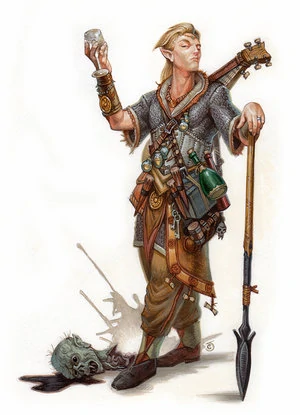
When playing a grave cleric, you will be in service to a deity of death, afterlife, or balance. At some D&D tables, clerics can be in service to the force of death or the afterlife in general, seeking to maintain the natural state of life and death.
Grave Cleric Features
Cleric subclasses gain features at the 1st, 2nd, 6th, and 17th levels. Grave clerics gain more spells, Channel Divinity use, and great healing options.
Domain Spells
As a grave cleric, you gain access to additional spells that you always have prepared. When you prepare your spells for the day, you do not include these spells in determining how many spells you can prepare.
First Level

At 1st level, you gain Bane and False Life. At 1st level, you will have around ten hit points. At the cost of one 1st level spell slot, you can increase this by 65% for one hour on average by casting False Life on yourself, making it a strong option.
While Bane is often considered a poor relative of its counterpart Bless, it can win you an entire fight in the right circumstances. It is thought to be less powerful because enemies must fail a saving throw first, but many enemies—even high level—have poor Charisma saving throw bonuses. However, if you’re considering casting Bane, it is probably a better idea to cast Bless on your allies instead.
Third Level
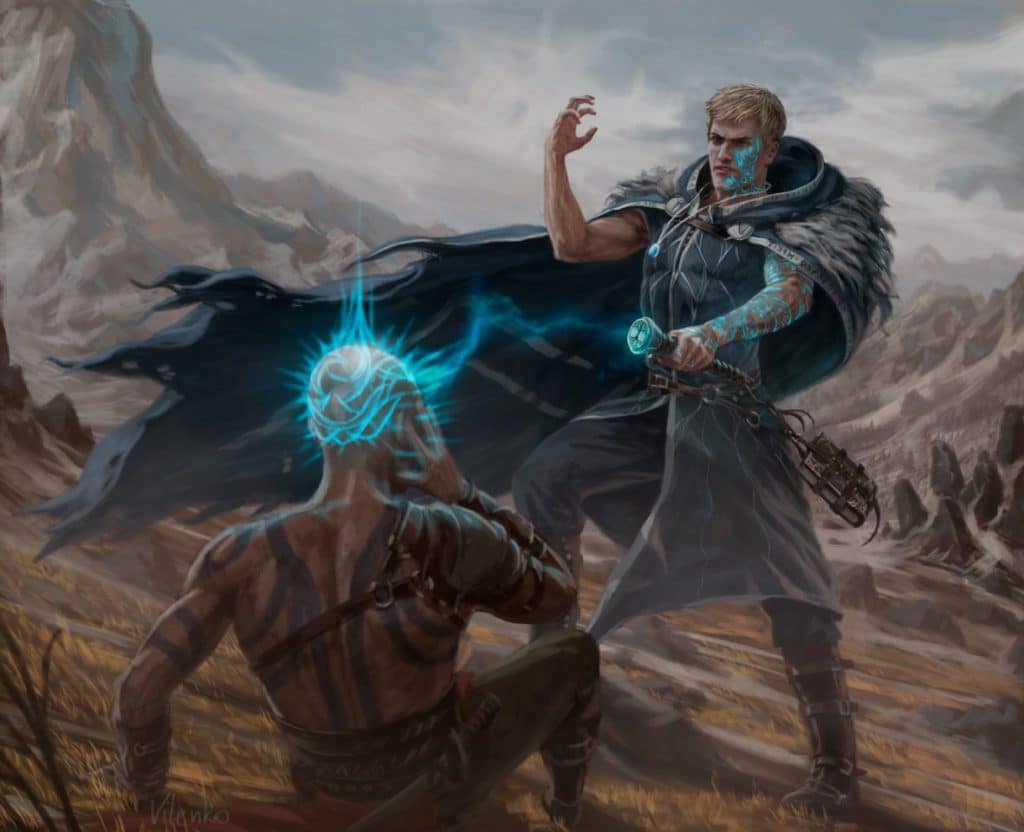
At the 3rd level, you gain Gentle Repose and Ray of Enfeeblement. The latter can half the damage of a Strength-based enemy. The enemy can save against the spell every turn, making it a weak option.
The former, Gentle Repose, allows you to delay the decomposition of a corpse you encounter. If you want to get cute with it, you could cast this on a dead ally to keep them inside the time limit for a Revivify spell.
You can recast the spell, as a ritual, every ten days. However, you would need to ensure that the copper coins stay in their eyes for the whole time. Then when you reach the 5th level, you can bring them back to life! Whether or not it’s in the spirit of the game is another debate entirely.
Fifth Level
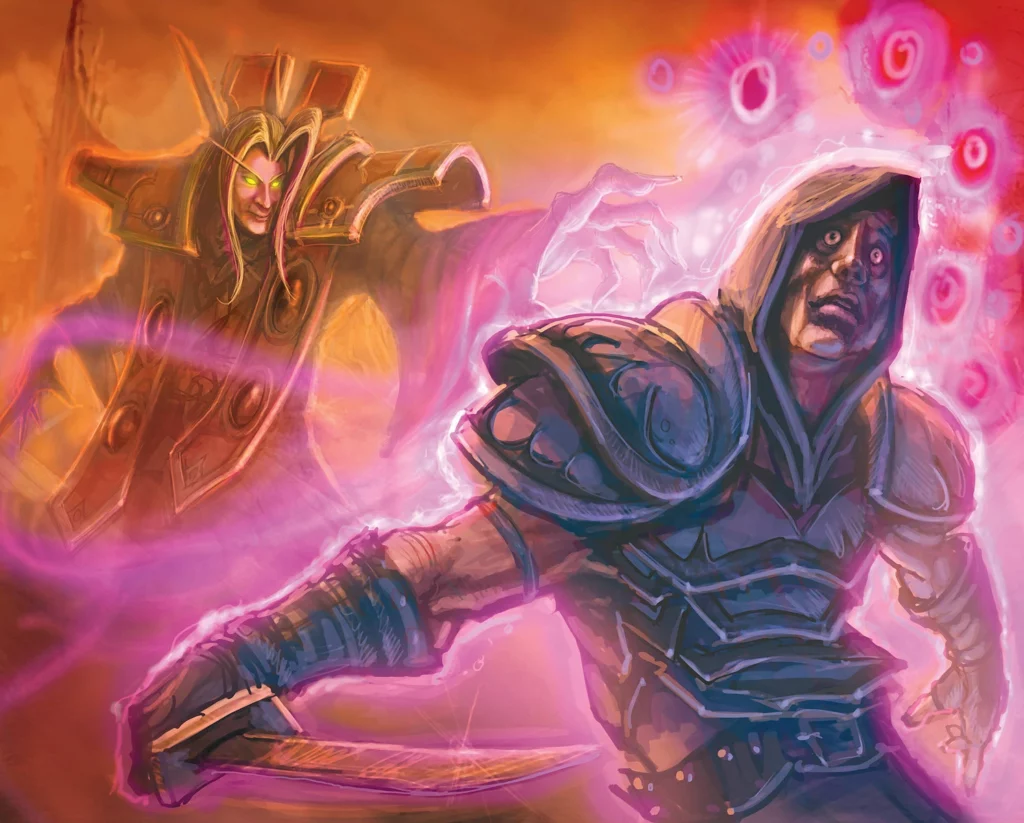
At the 5th level, you gain Revivify and Vampiric Touch. You should be preparing to Revivify every day anyway so this frees up one preparation each day. It allows you to bring someone back from the dead.
Just make sure you stock up on diamonds as often as possible as each resurrection costs 300 gold pieces. Vampiric Touch is a spell you shouldn’t ever be casting as you have greater uses of your concentration at this level like Spirit Guardians. Moreover, you should be avoiding getting up close to enemies as a grave cleric.
Seventh Level
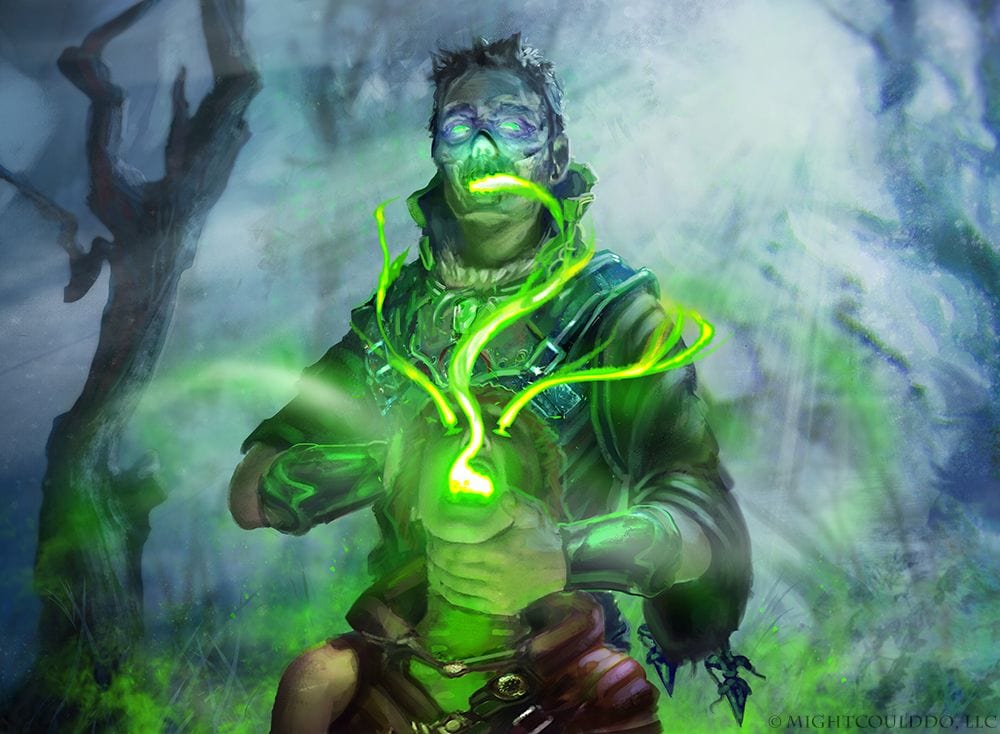
At the 7th level, you gain Blight and Death Ward. Blight is a single-target spell that sucks the moisture out of a creature. For a cleric, it deals decent damage but doesn’t work against undead or constructs. Most clerics should be preparing Death Ward as it allows you to keep an ally conscious when they get knocked down.
Cast this on yourself or a spellcaster so that concentration on an important spell isn’t lost. As a grave cleric, your healing is most potent when an ally is unconscious so it may be more advantageous to let your fighter get knocked unconscious and then cast Healing Word.
Ninth Level
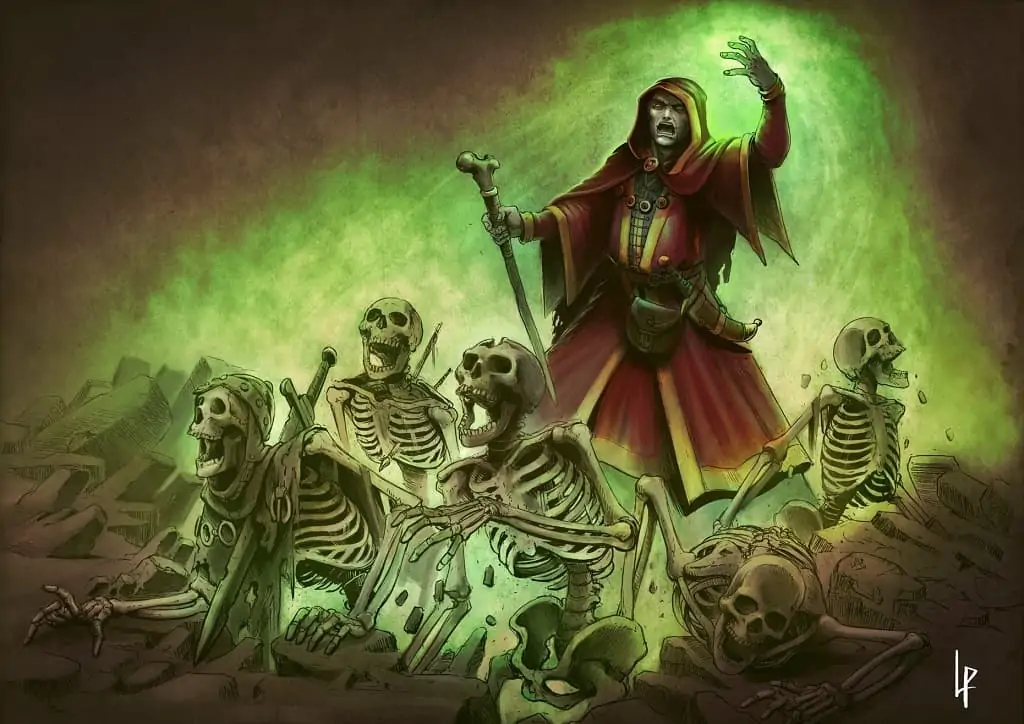
Lastly, at the 9th level, you gain Antilife Shell and Raise Dead. The former creates an impenetrable bubble around you that no living creature can get through. Spells, arrows, and all manner of objects can pass through but it’s a great way of keeping out of melee. If you cast it with an enemy next to you, it should push them back 10 feet to keep you safe.
Raise Dead is another resurrection option but it’s unnecessary to always have prepared since if you miss the window for Revivify, you have time to start a new day and prepare it then. Additionally, this spell has a penalty for bringing someone back to life which Revivify doesn’t.
Circle of Mortality (1st Level)
Starting off, you gain the ability to cast Spare the Dying as either a bonus action or an action, and from 30 feet away instead of its normal range of touch. This drastically improves this spell’s utility, allowing you to stabilize allies from across the battlefield and reserving your action for more powerful things.
Additionally, if you cast a spell to heal someone who is at 0 hit points, they gain the maximum possible healing instead of rolling dice. With this feature, Cure Wounds will heal eleven hit points over Healing Word’s seven.
This difference is even greater when upcast but Healing Word maintains the range advantage. Note that Heal doesn’t require you to roll dice so it doesn’t benefit from this feature.
Eyes of the Grave (1st Level)
This feature allows you to become aware of any undead within 60 feet of you and not behind total cover. It costs your action and doesn’t work through walls. Most of the time, if you suspect there to be undead around, you will be able to see them using your regular sight.
Channel Divinity: Path to the Grave (2nd Level)
Every cleric gains an additional use of Channel Divinity. This is a great use of this feature. It allows you to mark a creature to speedrun their death. It costs your action but then the next attack that hits it will effectively deal double damage.
Combined with a high damage attack like a rogue or a spell caster, this will be devastating. Note that the target has vulnerability to all of the attack’s damage, meaning that if an attack deals multiple types of damage, they are all effectively doubled.
Sentinel at Death’s Door (6th Level)
At the 6th level, you gain the ability to cancel critical hits on everyone within 30 feet of you. This is a great use of your reaction and the chances of multiple critical hits in the same round are unlikely. The limit of five uses per day will get you through the most adventuring days and will improve the survivability of your entire party.
Potent Spellcasting (8th Level)
Potent Spellcasting lets you add your Wisdom bonus to your cantrips that deal damage. Toll the Dead now deals 18 damage on average and since cantrips scale with your character, this gives you a great option to fall back on when you don’t want to cast a leveled spell. This is preferable to having to wade into melee to deal damage.
Keeper of Souls (17th Level)
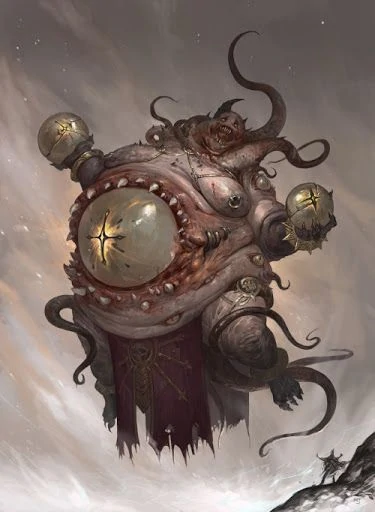
Lastly, at the 17th level, you or an ally of yours gains hit points when enemies are killed. The number of hit points equals the enemy’s number of Hit Dice. This ability is very thematically appropriate for the spellcaster but is a bit lackluster for a capstone subclass feature since the amount of healing is relatively small for tier 4 play.
For example, killing an ancient dragon will give a party member around 20 hit points. Still, this ability does not require the use of your reaction, it is a nice passive ability that can save your actions for more potent abilities.
Grave Cleric Spell Selection
Clerics are divine spellcasters with access to some of the best healing spells in the game. As a grave cleric, you don’t want to be wading into melee against enemies. Instead, keeping distance and hurling spells, healing allies, and controlling the battlefield should be your focus.
Clerics use the spell preparation method for their spellcasting. This means that you have access to the entire cleric spell list for the spell levels you can cast and every morning, you can change out what spells you will be able to cast that day.
Knowledge of what you’re going up against can be invaluable to you as you can prepare spells specifically for what you know. Otherwise, prepare spells that look good and swap them out if they’re not as useful as you expected. You have the luxury of not being tied to the choices that you make at every level.
Cantrips
- Guidance: Give your party a constant boost to ability checks. Use this whenever you’re not in combat.
- Light: This benefits even characters with darkvision as it sheds bright light for 20 feet. Just be aware it may draw attention to you in the middle of a dungeon.
- Sacred Flame: Ranged radiant damage for use against undead creatures.
- Toll the Dead: The damage is slightly higher than Sacred Flame and deals necrotic damage so it should be your go-to for everything that’s not undead.
1st Level Spells
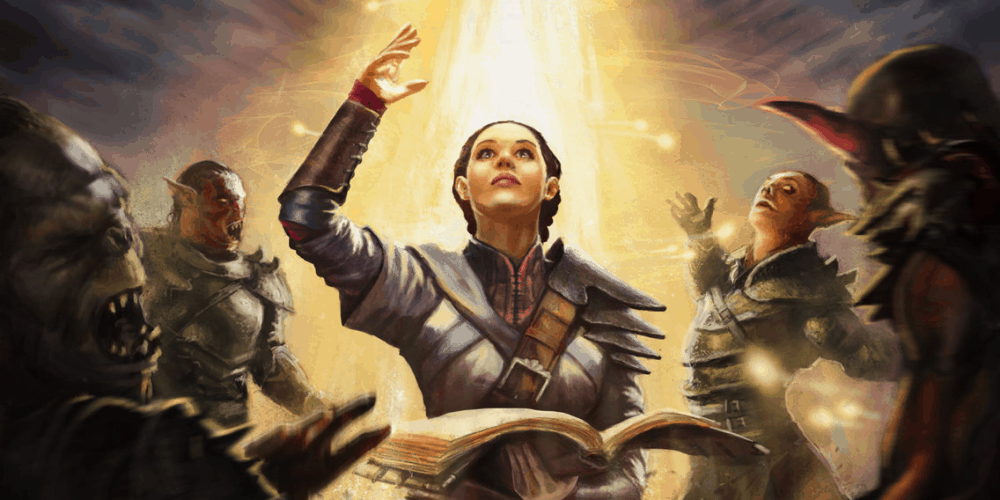
- Bless: Boost the chance to hit for three of your party members. This is a great spell and remains good at all levels, even without needing to upcast it.
- Cure Wounds: Good healing but requires you to get to the person you’re healing.
- Guiding Bolt: A great ranged option and high damage for a 1st level slot.
- Healing Word: Ranged healing that is boosted by your subclass feature when bringing someone back to consciousness.
- Sanctuary: Doesn’t require concentration and can keep you or an ally safe. Stand in a doorway, cast this, and take the Dodge action to hold off a horde of enemies.
2nd Level Spells

- Aid: While it doesn’t benefit from Circle of Mortality, it is a great healing option that upcasts powerfully.
- Augury: If you’re unsure what’s happening, ask the gods (a.k.a your DM) if you’re on the right path.
- Hold Person: At low levels, when you’re more likely to face humanoids, this can be a death sentence.
- Lesser Restoration: Gets rid of a condition like paralyzed or poisoned. However, oftentimes when an ally is afflicted in this way, the effect is temporary anyway and won’t require the expenditure of a spell slot.
- Silence: Are you about to storm the necromancer’s tower? Prepare this spell to shut down any spellcasting that requires verbal components.
- Spiritual Weapon: One of your best combat options that uses your bonus action and doesn’t require concentration.
3rd Level Spells

- Aura of Vitality: After combat, take 1 minute to heal 70 hit points across your whole party.
- Bestow Curse: Shut down an enemy from ever taking part in the fight.
- Dispel Magic: Useful on any number of magical effects.
- Protection from Energy: Another spell that rewards reconnaissance. If you know you’re fighting a white dragon, grant someone resistance to cold damage.
- Spirit Guardians: Powerful on any cleric. Even if you’re not in melee, it controls the battlefield by slowing enemies but not allies.
4th Level Spells
Often at this level and beyond, you are comparing each spell to an upcasted Spirit Guardians.
- Banishment: Why kill something when you can send it to another plane of existence? Kill everything else and if it returns, gang up on it before it gets a chance to do anything.
- Divination: Ask your DM about something you’re about to do in the next 7 days and they have to tell the truth.
- Stone Shape: A great utility option in dungeons and castles that lets you and the whole party create passageways.
5th Level Spells
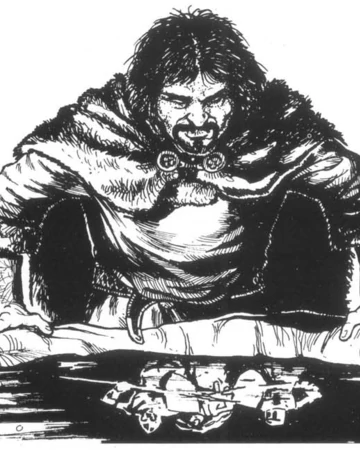
- Commune: Ask your deity three yes-or-no questions every day. This spell is a ritual so you don’t even have to use the spell slot.
- Greater Restoration: When healing hit points isn’t doing the job, this spell does. Heal exhaustion, petrification, maximum hit point reduction, and curses.
- Scrying: Want to know what the bad guy is up to? No problem, just spy on them using the power of the gods.
- Summon Celestial: A good summoning option to help you in combat. For a grave cleric, your celestial creature should look like some kind of Grim Reaper.
6th Level Spells
- Heal: Restore 70 hit points in one action. This is a great in-combat option to keep someone in the fight.
- Heroes’ Feast: This spell is expensive but worth casting every adventuring day. The additional hit points stack with Aid if you want to boost your defenses.
- Word of Recall: If you ever get in over your head as a party, it’s good to have this spell set up to get out of trouble as soon as you can.
7th Level Spells
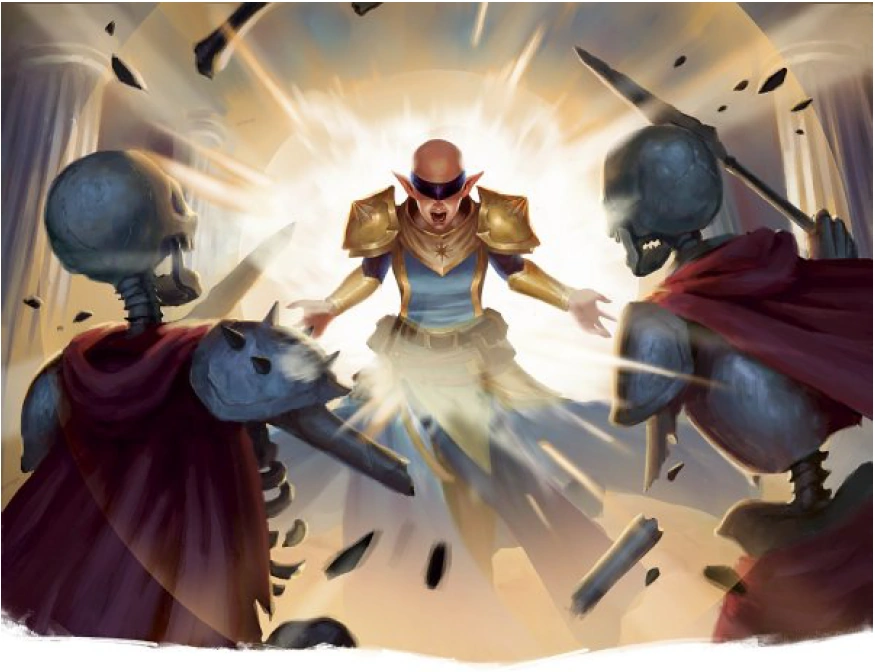
- Divine Word: Instead of banishing one creature, why not banish every extraplanar entity that you can see at the same time? Additionally, creatures low on hit points get increasingly debilitated. Use this on an invading army and watch absolute devastation.
- Plane Shift: Being able to move across planes at this level is important and if you cast it twice, you could use it to travel to another spot on the Material Plane.
8th Level Spells
- Holy Aura: Bless all of your friends to have an advantage on saving throws and all creatures to have a disadvantage on attacks against them.
9th Level Spells
- Mass Heal: Heal 700 hit points across your party.
Grave Cleric Feat Selection
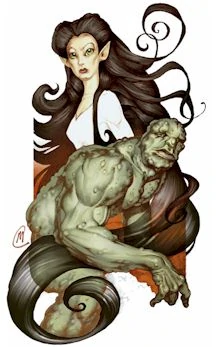
- Fey Touched. This feat gives you Misty Step and another powerful spell option like Gift of Alacrity or Silvery Barbs.
- Metamagic Adept. Aura of Vitality heals 70 hit points over one minute. Pick up Extended Spell and you can double the duration to heal 140 hit points with a 3rd level spell slot.
- Lucky. This feat is great for every character.
- Resilient Constitution. Protect your spell concentration with this feat.
Grave Cleric Multiclass Options
If you plan to primarily be a grave cleric, consider multiclassing after either six, seven, or eight levels. If you are multiclass into another full spellcaster, you will maintain your spell slot progression, allowing you to upcast Spirit Guardians while gaining other interesting options.
The grave cleric gains some great features at 1st and 2nd levels so you might consider only taking one or two levels in grave cleric and primarily be another class.
Druids share the same ability score as clerics and are also full spellcasters, making for a powerful combination.
Taking two levels in a fighter is a good multiclass option for many characters, giving you a Fighting Style, Action Surge, and Second Wind. You should start as a fighter to gain Constitution saving throw proficiency and then multiclass into a cleric. The downside is that you miss out on two levels of spell slot progression.
FAQ
Question: Is Grave Domain Cleric good?
Answer: Yes, the grave cleric is one of the most powerful cleric subclasses.
Question: What is a grave cleric 5e?
Answer: A grave cleric is a cleric dedicated to a god of death or the afterlife. They gain additional abilities concerned with keeping allies alive and killing foes.
Question: Is a grave cleric fun?
Answer: Yes, if you’ve ever wanted to play as Hades, Anubis, the Grim Reaper, or any arbiter of life and death, the grave cleric is perfect for you. They are a powerful subclass that focuses on delaying the death of their allies and expediting the death of their enemies.
Question: Which D&D book has a grave cleric?
Answer: The grave cleric is one of two cleric domains found in Xanathar’s Guide to Everything.
Question: Do grave clerics get Turn Undead?
Answer: Yes. Turn Undead is a feature that every cleric gets using their Channel Divinity feature.
Question: What spells can a grave cleric use?
Answer: Grave clerics can access all the usual cleric spells but automatically get bane, false life, gentle repose, a ray of enfeeblement, revivify, vampiric touch, blight, death ward, antilife shell, and raise dead. They do not need to prepare these spells each day.
Question: Does path to the grave work on immunity?
Answer: No. Path to the grave does not remove any damage resistance or damage immunity. If you use this feature on a creature with resistance to the same damage type, they effectively cancel out and it will still deal no damage to a creature with immunity.
Question: Are grave clerics healers?
Answer: Yes, grave clerics make fantastic healers. In D&D, it is usually most optimal to heal allies after they fall unconscious. A grave cleric does maximum healing when they heal unconscious allies, making them potent healers.
Summary
The grave domain cleric is a powerful spell caster that oversees the veil between life and death, delaying death for their allies and fast-tracking death for their enemies.
With some great offensive options, the grave cleric is powerful in a fight but with some great healing options, you will find yourself choosing whether to heal or harm.
Either way, you will have a great time playing as a grave cleric in D&D.
- Armor of Agathys 5e Guide: What is Armor of Agathys? - August 3, 2022
- Oath of the Ancients 5e Guide - August 3, 2022
- Dissonant Whispers 5e Guide - July 20, 2022

